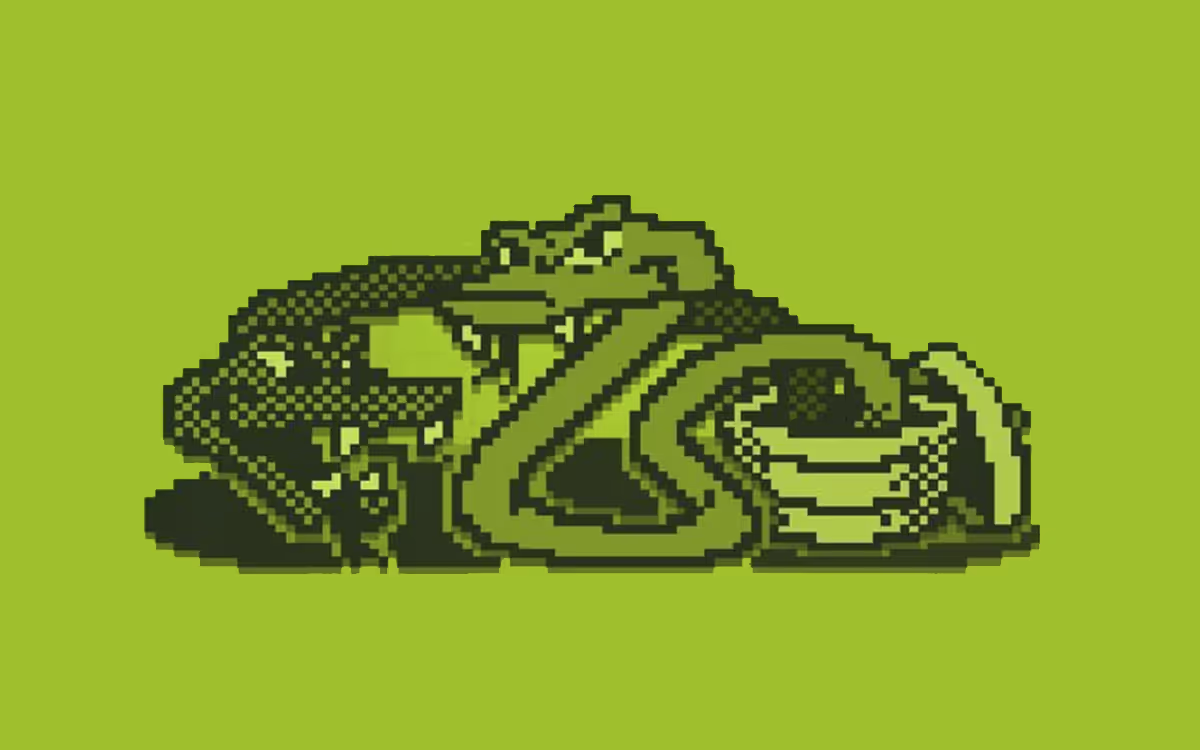What Are Snake Tasks? The Productivity Trap That’s Slowly Draining Your Energy

In the world of productivity and time management, we often talk about eating frogs—tackling the biggest, hardest tasks first thing in the morning. But there’s another creature lurking in your to-do list that’s equally dangerous, though far more subtle: the snake. Snake tasks are those projects and responsibilities that slither through your schedule, never quite finishing, constantly shifting shape, and slowly draining your mental energy without you even realizing it. Understanding what snake tasks are and how to identify them is essential for improving work efficiency and overcoming chronic procrastination.
The Snake Task Meaning: What Makes a Task “Snake-Like”?
Unlike a frog task that’s simply hard or unpleasant, snake tasks have a unique quality—they’re elusive, they stretch on endlessly, and they have a way of multiplying when you’re not looking.
The term originates from the project management and Agile development communities, where teams noticed certain tasks that would “slither” through sprint after sprint, never reaching completion. These unfinished tasks earned the nickname “snakes” because, like their reptilian namesakes, they’re hard to grasp, difficult to eliminate, and have a tendency to reappear just when you thought they were gone.
Think about that project that’s been on your task list for three months. Or that email you’ve been meaning to send for weeks. Or that report that somehow requires “just a little more research” every time you look at it. These are classic snake tasks—they coil around your consciousness, creating mental drag that impacts everything else you do and preventing you from achieving your productivity goals.
Understanding Different Types of Snake Tasks
Not all snake tasks are created equal. In effective task management strategies, professionals have identified several distinct categories:

Stop letting snake tasks drain your energy
Keep your goals in sight and your schedule clear
Get StartedTake a Break: Play Snake
Before you dive into killing those productivity snakes on your task list, why not face a different kind of snake? Sometimes the best way to reset your mental energy is with a quick game break.
This classic Snake game is the perfect metaphor for task management—stay focused, don’t let things pile up, and keep moving forward. Plus, unlike your real snake tasks, this one has clear rules and a definite endpoint.
The Hidden Cost of Snake Tasks on Your Productivity
The impact of snake tasks extends far beyond the specific projects they represent. Incomplete tasks create what psychologists call the “Zeigarnik effect"—our brains continue to think about unfinished work even when we’re not actively working on it.
This constant background processing drains mental energy that could be used for creative thinking, problem-solving, and strategic work. Studies on workplace productivity show that employees spend up to 20 hours per week simply tracking down information and managing incomplete tasks, significantly reducing their actual productive output and increasing stress levels.
Snake tasks create several specific problems that compound over time:
Psychological Weight: Each incomplete task carries emotional and cognitive burden. Snake tasks, by their nature of never quite finishing, create sustained anxiety and guilt that affects your overall wellbeing and job satisfaction. This mental burden makes it harder to focus on high-impact work.
Decision Fatigue: Every time you review your to-do list and see that same lingering task, you must decide again whether to work on it. This repeated decision-making drains the mental resources you need for more important choices throughout your day, reducing your ability to prioritize tasks effectively.
Momentum Disruption: When you work on a snake task that doesn’t reach completion, you miss the motivational boost that comes from finishing things. This can create a negative spiral where your productivity feels perpetually stalled, making it harder to overcome procrastination in the future.
Opportunity Cost: Time and energy spent on snake tasks is time not spent on high-impact work that could actually move your career or business forward. The longer these tasks persist, the more opportunities you miss to achieve your long-term goals.
Team Impact: In project management contexts, snake tasks affect entire teams. When work items carry over from sprint to sprint, they demoralize team members, make planning difficult, and obscure the true velocity of the team, hampering overall productivity improvement.

Stop letting snake tasks drain your energy
Keep your goals in sight and your schedule clear
Get StartedHow to Identify Your Snake Tasks: A Practical Framework
The first step in overcoming procrastination caused by snake tasks is recognizing them. Here’s a systematic approach to identifying the snakes hiding in your task management system and improving your work habits:
Killing Snakes: 6 Strategies to Overcome Chronic Procrastination
The Agile community has a saying: “If you see a snake, kill it.” This advice emphasizes the importance of dealing with problems immediately rather than letting them persist. Here’s how to apply this principle to your snake tasks and boost productivity:
Strategy 1: The Hard Cut
Sometimes the best way to eliminate a snake is simply to delete it. Review your snake tasks honestly and ask if they truly need to be done. Many tasks that seemed important weeks ago are no longer relevant. Give yourself permission to let them go. This is not failure—it’s strategic prioritization and an essential part of effective time management.
Strategy 2: The Time Box Execution
For perfectionism paralysis snakes, set a strict time limit using timeboxing techniques. Allocate exactly two hours to complete the task to whatever standard you can achieve in that timeframe. When the timer rings, ship it. This productivity technique helps you overcome the fear of imperfection by forcing action and completion.
Strategy 3: The Minimum Viable Completion
Instead of aiming for the ideal outcome, identify the absolute minimum that would make this task “done enough.” Often, good enough is actually good enough for maintaining momentum and avoiding procrastination at work. Redefine your success criteria to something achievable and move forward.
Strategy 4: The Dependency Destroyer
For tasks blocked by others, take aggressive action. Send the reminder email. Schedule the meeting. Escalate to a decision-maker. Document the blocker and officially park the task until the dependency is resolved. This removes it from your active mental load while keeping it tracked in your project management system.
Strategy 5: The Clarity Session
Schedule a focused 30-minute session specifically to define the ambiguous task. Document the goal, success criteria, required resources, and specific next steps. Often, this clarity alone transforms an overwhelming snake into a straightforward task you can tackle, significantly improving your work efficiency.
Strategy 6: Break the Snake Into Segments
For scope creepers, practice task decomposition by breaking the massive project into distinct, completeable chunks. Break down tasks into smaller, manageable pieces and work on these one at a time, experiencing the motivation boost of multiple completions rather than one distant goal. This is one of the most powerful task management tips for handling complex projects.
The Waste Snake Technique: A Team Approach to Snake Tasks
While individual snake tasks are challenging, teams face an additional problem: collective snake tasks that impact everyone’s productivity. The Agile community developed an elegant solution called the “Waste Snake” or “Pain Snake” technique for improving team productivity.
Here’s how it works in team settings:
Create a visual board in your workspace (physical or digital). Every time a team member encounters a delay, interruption, or blocking issue, they write it on a post-it note including:
- Time lost due to the issue
- What was affected
- The root cause
- Their initials
These notes get added to form a growing “snake” on the wall. Over the course of a sprint or work cycle, the snake grows longer, creating a visual representation of accumulated waste and inefficiency that’s draining team energy.
During retrospectives or team meetings, review the snake to identify patterns and improve work habits. Questions to explore include:
- Which types of interruptions appear most frequently?
- How much total time is the team losing to specific categories of problems?
- What systematic changes could prevent these issues?
- Which snakes should be prioritized for elimination?
This technique works because it makes invisible productivity drains visible. When teams can see that they’re losing 15 hours per week to a flawed approval process or outdated tool, it becomes much easier to justify the investment in fixing the root cause and boosting productivity.
Preventing Snake Tasks: Proactive Task Management Practices
Prevention is more effective than cure when it comes to snake tasks. Build these productivity habits into your workflow to stop tasks from becoming snakes in the first place and maintain high work efficiency:
Snake Tasks vs. Frog Tasks: Understanding the Difference

Both snake tasks and frog tasks represent productivity challenges, but they require different approaches to overcome and improve time management:
Frog tasks are unpleasant or difficult tasks that you know you should do but resist starting. The eat the frog technique tells you to tackle these first thing when your energy and willpower are highest. Frog tasks have clear outcomes—they’re just hard or uncomfortable to complete.
Snake tasks, by contrast, are characterized by their elusiveness and tendency to extend indefinitely. While a frog task needs courage and energy to complete, a snake task needs clarity, boundaries, and often strategic elimination to stop procrastinating.
You might have a task that’s both a frog and a snake — difficult AND poorly defined. These are particularly dangerous and should be your highest priority to address. Start by bringing clarity (killing the snake aspect), then apply the eat the frog method to actually complete it and boost productivity.
Making Snake Task Management Part of Your Routine
Integrate these practices into your regular workflow to maintain a snake-free task environment and maximize work efficiency:
Daily: When adding new tasks, immediately define the outcome and check for ambiguity. Don’t let poorly defined tasks enter your system. This daily habit is one of the most effective productivity tips for preventing task accumulation.
Weekly: During your weekly review using time management techniques, identify any tasks that haven’t moved. Apply one of the snake-killing strategies immediately—don’t let them roll forward again. Regular reviews are essential for overcoming procrastination.
Monthly: Conduct a “swamp draining” session where you systematically review all open projects, eliminating low-priority items and bringing clarity to anything that’s become vague. This monthly practice improves work habits and keeps your task list manageable.
Quarterly: Reflect on patterns. Are certain types of tasks consistently becoming snakes? This might indicate a need to change how you approach those areas of work or adjust your task management strategies.
Using Timestripe makes this process easier by providing clear visual timelines that make snake tasks obvious. When you can see tasks that have been lingering without progress, it’s much harder to ignore them, helping you maintain high productivity and stop procrastinating effectively.
The Reality Check: This Won’t Be Easy
Let’s be honest: identifying and eliminating snake tasks is uncomfortable work. It requires admitting that some projects you started aren’t worth finishing. It means having difficult conversations about blocked tasks. It demands that you set boundaries and define scope when it would be easier to stay vague.
But here’s the truth: snake tasks won’t magically resolve themselves. Every day you avoid dealing with them, they accumulate more psychological weight and drain more of your energy, making it harder to overcome procrastination. The discomfort of addressing them now is far less than the sustained drain of carrying them indefinitely.
The productivity experts who developed these concepts—from Agile coaches to time management researchers—all arrived at the same conclusion: ruthless task management is not optional for sustained high performance and work efficiency. It’s the foundation of achieving your goals and maintaining healthy work habits.
Your Action Plan: Start Today
Here’s what to do right now, before you close this article and begin improving your productivity:
- Open your task management system
- Identify three tasks that have been there longest without progress
- For each one, make an immediate decision using these task management tips:
- Delete it if it’s no longer relevant
- Delegate it if someone else should own it
- Define it clearly if it’s ambiguous
- Schedule focused time if it’s important but neglected
- Document and park it if it’s blocked
Don’t spend more than 15 minutes on this initial review. The goal isn’t perfection, it’s action. Take the first steps toward a snake-free productivity system today and start overcoming chronic procrastination.
Read next

Stop letting tasks slither through your schedule
Bring clarity to your work and momentum to your days with proven time management techniques!
Get Started

